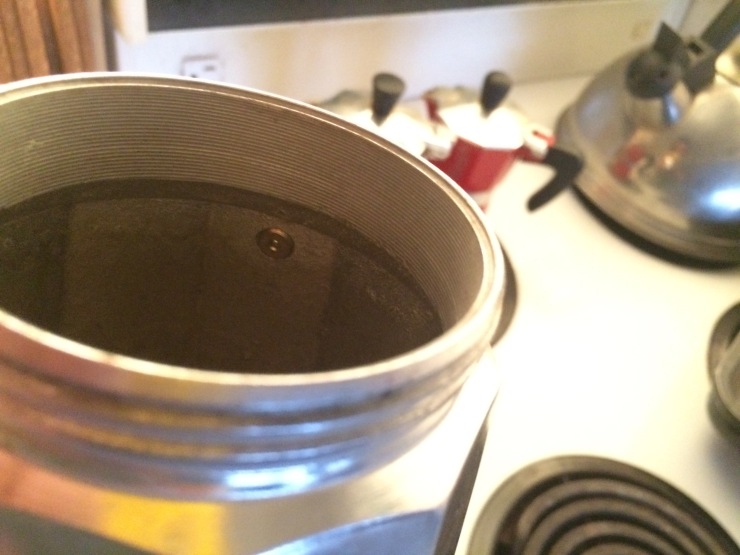Yes, of course: each and every day is different from the others, carpe diem, seize the day, after all tomorrow is another day, day by day, step by step…
The list could go on and on.
But one certainty remains in our lives when we are on the verge of unclosing our eyelids to a new day… That certainty bears a dear name which begins with ‘c’, but it is not what you all are thinking of, little rascals!
When you get up in the morning, no matter which day you are waking up to, no matter whether the sheets have been worn out by sultry and passionate battles with other human beings or are as cold as a Renaissance marble tombstone, an Italian irreplaceable companion is il caffé – the coffee – and the glorious and meticulous liturgy of preparing it with a moka pot, its sound when the hot, dark liquid is reaching the top of the funnel and the scent that spreads around the dining room, or the bedroom (if you are lucky enough to have someone who prepared the coffee for you, allegedly served on a silver tray paired with a warm piece of pastry).
Many of my friends, even if they love this hot beverage, are not very familiar with the refined science of using a moka and properly preparing un caffè. Some others explicitly asked me to illustrate the few key passages to get this done. Hence here they are.

• The moka and its parts
The venerable mokas were invented in Italy during the roaring ’30s, precisely in 1933. Allegedly the most famous moka’s brand is that of Bialetti, after Alfonso Bialetti, a moustached gentleman who conceived and designed the prototype of what is now considered a staple of Italian culture.
The name moka comes from the city of Mocha, in Yemen, for many centuries a center of coffee excellence.
Every moka comprises a cylinder or lower chamber, a filter funnel, a collector or upper chamber and a second removable filter, that must be cleaned after every use.
• The c-spot
You add water, that’s the principle. Right, but up to which point?
There is a little valve that helps you understand the level you are supposed to reach in order to avoid a Venetian high tide experience and consequent explosion before breakfasting.

• Preparation
Pour the cold water into the base chamber up to the level of the valve. Insert the filter.
Fill the filter with ground coffee but don’t pack it down – the coffee powder has to breathe!
Screw the upper and lower chamber tightly together.
• Putting everything together
Place the moka on the stove.
After your moka starts gurgling, the caffè is ready. You can pour it and serve it to yourself, guests or colleagues.
*Suggestions: keep the heat low or, as soon as you hear it gurgle, lower it down.
**How to clean a moka? I usually clean the removable filter and I never use soap, only warm water. I wash the lower cylinder and I rinse (never scrub!) from time to time the upper chamber.

Coffee is a constant companion throughout my daytime. I sometimes dare to have the very last one after dinner and it does not affect my sleep. Probably because I am so addicted to it. I am sure doctors might find a 87% of coffee and some red blood cells in my veins, since I drink so much of it!
And what about you? Do you like Italian coffee? Do you have a moka or even collect them? Or do you prefer the American-style coffee?
Tell me, tell me.
I am all ears, sitting at my desk, sipping at my coffee…




Sebastiano, tu me fais craquer! Il tuo blog èmagnifico…
LikeLike
Grazie mille Nada • We live only once and we have to share some joyful and funny moments ^_^ baci
LikeLike